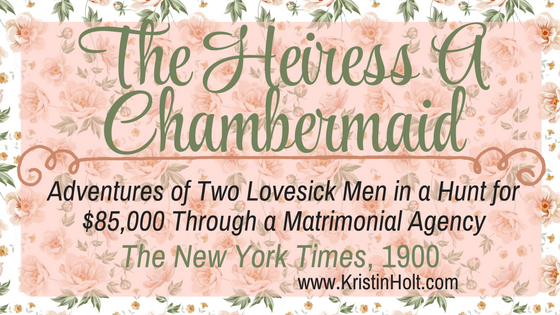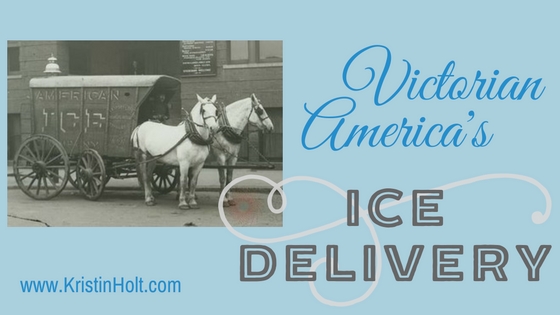
by Kristin Holt | Jun 16, 2017 | Articles
Scams involving fraudulent matrimonial companies abounded in the nineteenth century. Vintage newspapers often reported circumstances, chastised the foolish hearts who sent money to their correspondent, and insisted that no man or woman worth marrying needed to resort to the mail or an agency. This article, titled the same (as my post) was originally published in The New York Times, January 21, 1900, and details the circumstances of a purported “heiress”, gushing love letters on scented stationery, her two lovesick swains, the Manhattan matrimonial agency, and the judge’s decree.

by Kristin Holt | Apr 10, 2017 | Articles
“Nineteenth Century Problems” is a bit of poking fun at today’s “First World Problems” tongue-in-cheek humor…the challenges we face today because we have a life of ease. I came across the Nineteenth Century practice of allowing barnyard animals free run of the surrounding neighborhood–not a problem until their presence (and eating habits, and messes)–became an inconvenience of that growing town. Read vintage newspaper clippings about this challenge and the dangers it posed, along with a separate, serious threat of the late Nineteenth Century; now that’s a serious problem!

by Kristin Holt | Mar 2, 2017 | Articles
In the 19th century American West, Gingham was more than checked fabric made of cotton–it was also striped. Any woven cotton cloth made of pre-dyed alternating threads (plaid, striped, or checked) was called gingham. Why would pioneers (or frontiersman, or Old West women) select gingham? What made this fabric practical? Why would we name an anthology with Gingham in the title?

by Kristin Holt | Nov 19, 2016 | Articles
Were earrings popular and common within the nineteenth century? Or did they come into vogue (and acceptance) post 1900?
This article references period newspapers, catalogs, and vintage photographs. Also discloses an element of cover art for (Gus’s Story) The Marshal’s Surrender.

by Kristin Holt | Aug 23, 2016 | Articles
Victorian Americans needed ice–for home use, through delivery businesses, on a commercial scale (to keep food from spoiling at the grocery and in railroad transportation). Ice houses were built all over the United States from the independent family’s ice house on their property to the enormous commercial Swift & Co. Ice House storing 60,000 tons annually. Ice harvesting occurred in January and February and kept in storage facilities until the following winter by applying ingenuity, science, and hard work. Men used saws, horse-drawn sleighs, and the strength of their own backs to harvest the cash crop each winter. This article contains vintage photographs, newspaper ads, and science info of the Victorian era.













